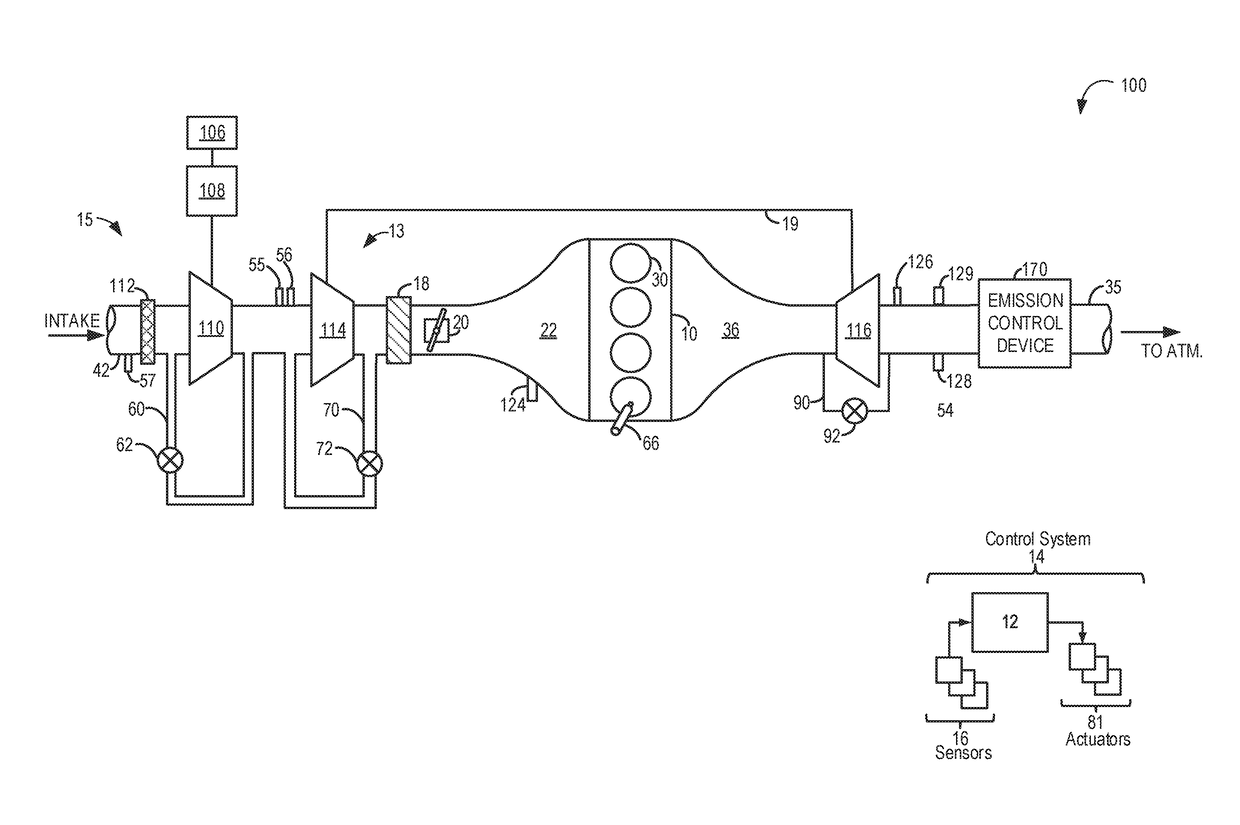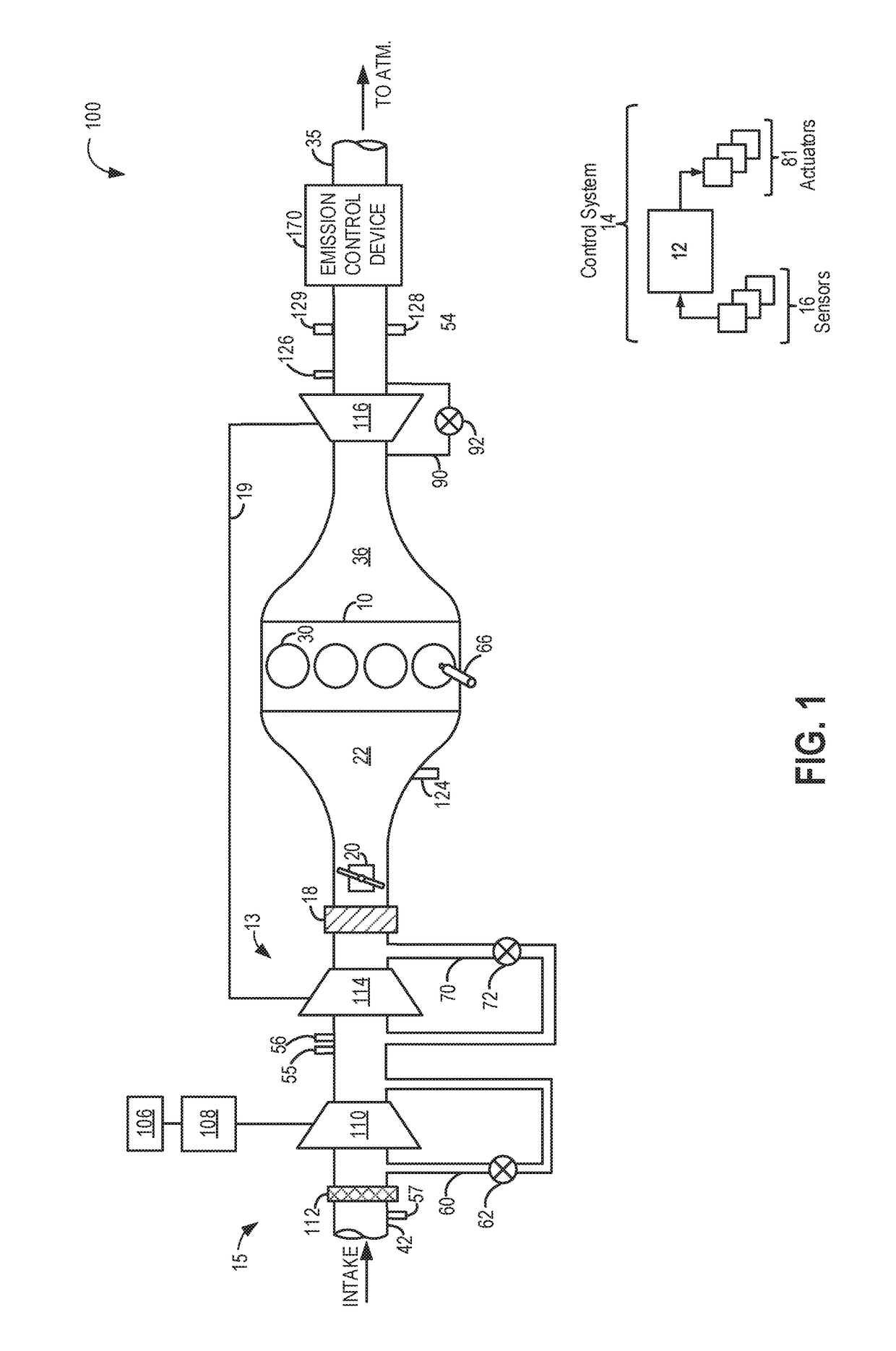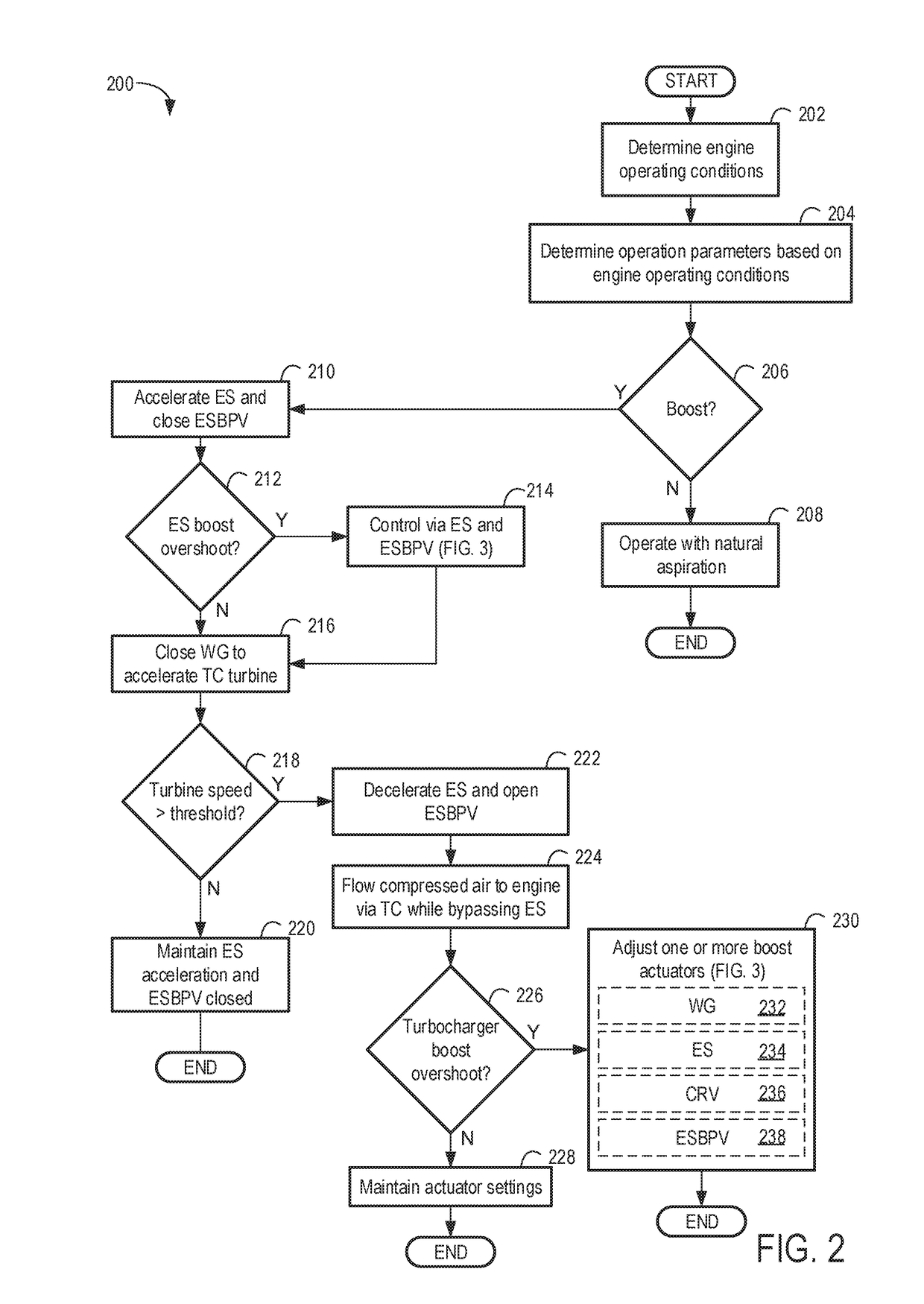Method and system for boost pressure control
a technology of boost pressure and control method, applied in the field of methods and systems, can solve the problems of excessive engine torque output, difficult control, and inability to brake the electric motor and provide negative torque, so as to improve the boost response of the engine and increase the mass
- Summary
- Abstract
- Description
- Claims
- Application Information
AI Technical Summary
Benefits of technology
Problems solved by technology
Method used
Image
Examples
Embodiment Construction
[0015]The following description relates to systems and methods for improving boost control in an engine system having staged boosting devices, such as in the boosted engine system of FIG. 1, wherein a turbocharger is staged downstream of an electric supercharger. A controller may be configured to perform a routine, such as the example routines of FIGS. 2-3, to use the electric supercharger to reduce turbo lag while regulating boost pressure overshoot using adjustments to a rotation speed of the supercharger motor and the opening of a bypass valve coupled across the supercharger. These adjustments may be used in a complementary frequency to boost pressure controlling wastegate valve adjustments. During conditions of boost pressure overshoot downstream of the turbocharger, the electric supercharger compressor speed may be controlled to choke airflow through the turbocharger, the supercharger speed adjusted based on a compressor map, such as the map of FIG. 4. An example boost control ...
PUM
 Login to View More
Login to View More Abstract
Description
Claims
Application Information
 Login to View More
Login to View More - R&D
- Intellectual Property
- Life Sciences
- Materials
- Tech Scout
- Unparalleled Data Quality
- Higher Quality Content
- 60% Fewer Hallucinations
Browse by: Latest US Patents, China's latest patents, Technical Efficacy Thesaurus, Application Domain, Technology Topic, Popular Technical Reports.
© 2025 PatSnap. All rights reserved.Legal|Privacy policy|Modern Slavery Act Transparency Statement|Sitemap|About US| Contact US: help@patsnap.com



